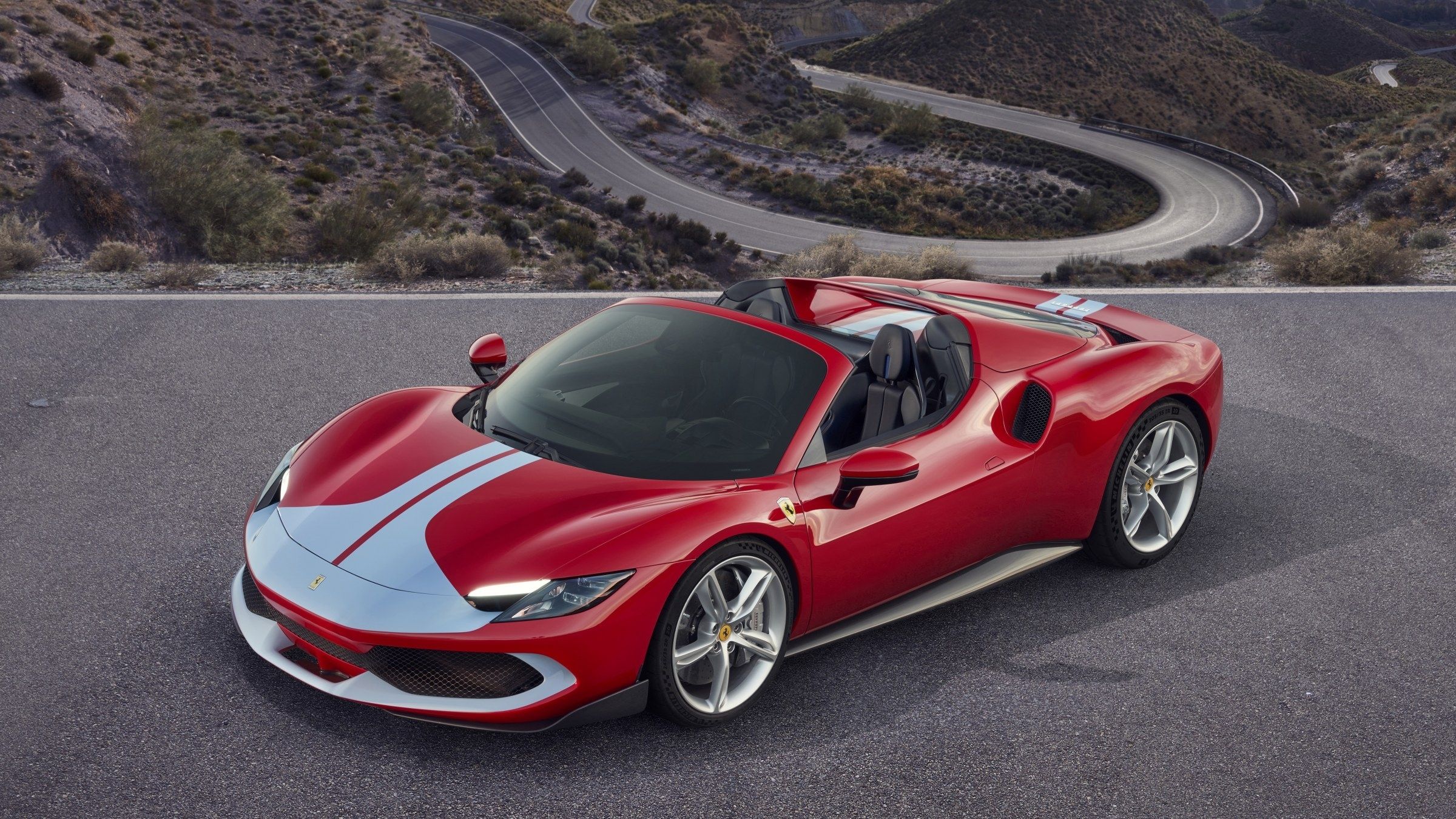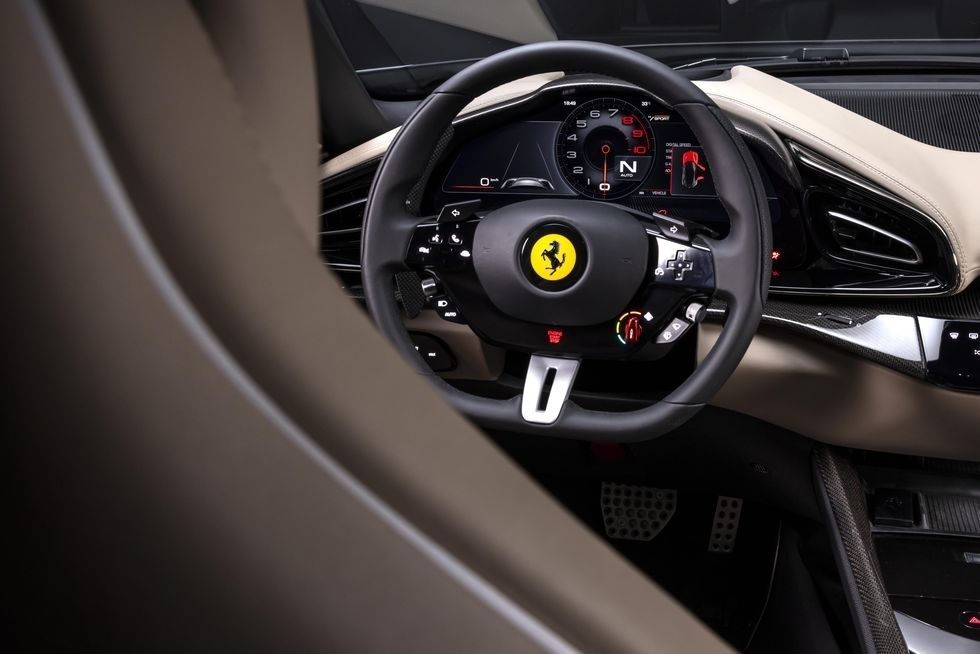
There is no doubt that Ferrari has mastered the art of electronic chassis control. With a twist of the "manettino" mounted on the steering wheel, you can tweak the dynamics of a Ferrari 296, or any other current Ferrari, to perfectly suit the driving conditions.
By tweaking the adaptive suspension, transmission, engine, and gearbox responses, as well as the electronic differential settings, the driver can select preset or custom combinations to offer various experiences. These settings significantly alter the car's behavior and feedback to the driver, offering possibilities ranging from "gentlemanly cruiser" to "thrilling track monster".
But what would happen if the motive power is provided by electric motors? Surely the delicacy of on-the-limit car control will disappear along with the internal combustion engine? Not if Ferrari has any say in the matter! According to a patent discovered by CarBuzz at the USPTO, Ferrari is working on all manner of tricks to retain or improve driver feedback, even if a howling gas engine no longer features in the equation.
As with most clever ideas, this patent is quite simple in concept. Using the sensors for wheel speed, yaw angle, and steering angle, the stability management system calculates the amount of grip available at each driven wheel, as well as the tire slip angle at any specific moment. In this way, the new stability management system can predict what the chassis will do next. So far, so familiar, but the difference is that this Ferrari proposal will simultaneously take action to control the vehicle's motion and also let the driver know that the grip limits have been reached using real tactile feedback.
Instead of merely selectively applying the brakes, cutting the power, or changing the torque distribution and being done with it, Ferrari has come up with some techniques to let the driver know when the stability management system is doing its thing. In the case of electric power, they'll change the supply voltage to one of the phases of an electric motor, inducing a tangible vibration in the drivetrain.
Think of it as a misfire on one of the e-motors to not only fine-tune the dynamics of the car but also alert the driver that they are approaching the limits of mechanical grip. If this system is applied to an ICE-powered car, the traction management system will introduce similar misfires to the engine by cutting the fuel and spark on random cylinders, again introducing a tangible vibration to the car.
The mere fact that the engineers and mathematicians have devised a way to implement this new development on both internal combustion-engined cars and future EVs demonstrates that Ferrari hasn't given up on good old gas power just yet. But, crucially, this development confirms that, even if it will be powered by electrons, future Ferraris will still keep their drivers involved in their progress. That's never a bad thing.

